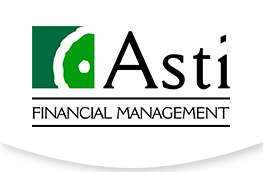At some point, every economic cycle slows down. While no one can predict the exact timing of the next recession, understanding the warning signs—and how to respond—can help you protect your investments and stay calm during market downturns.
Here are six common signs of a potential recession, and more importantly, what you can do to recession-proof your portfolio.
- Inverted Yield Curve
An inverted yield curve occurs when short-term interest rates exceed long-term rates, often signaling investor pessimism about future economic growth.
Current Status: As of April 30, 2025, the yield on the 10-year Treasury note was 4.29%, while the 2-year note stood at 3.74%, resulting in a positive spread of 0.55 percentage points. This indicates a normalized yield curve, suggesting that this particular recession signal is not currently flashing red.
✅ What to do: Continue to monitor the yield curve for any signs of inversion, which could indicate shifting investor sentiment.
- Rising Unemployment
Increasing unemployment rates can reflect weakening business conditions and reduced consumer spending.
Current Status: The U.S. unemployment rate rose slightly to 4.2% in March 2025, up from 4.1% in the previous month. While still relatively low, this uptick may warrant attention if the trend continues.
✅ What to do: Diversify your portfolio to include sectors less sensitive to economic cycles, such as healthcare and utilities, which tend to be more resilient during downturns.
- Declining Consumer Confidence
Consumer confidence reflects households’ willingness to spend, a key driver of economic activity.
Current Status: In April 2025, the Conference Board Consumer Confidence Index fell by 7.9 points to 86.0, marking the lowest level since May 2020. The Expectations Index, which gauges consumers’ short-term outlook, dropped to 54.4, well below the threshold of 80 that typically signals a recession ahead.
✅ What to do: Ensure you have sufficient cash reserves to cover expenses during potential economic slowdowns, reducing the need to liquidate investments at inopportune times.
- Slowing Corporate Earnings
Corporate earnings provide insight into business health and profitability, influencing investment returns.
Current Status: As of May 1, 2025, S&P 500 companies reported an estimated first-quarter earnings growth of 12.9%, up from 8.9% the previous week, driven by strong performances in the tech sector. However, forecasts for the second quarter have been revised downward to 6.9%, reflecting concerns over trade tensions and economic uncertainty.
✅ What to do: Regularly review and rebalance your portfolio to align with your risk tolerance and investment goals, especially in light of changing corporate earnings landscapes.
- Decline in Manufacturing Activity
Manufacturing activity is a leading indicator of economic health, with contractions potentially signaling broader slowdowns.
Current Status: The ISM Manufacturing PMI registered at 48.7% in April 2025, down from 49.0% in March, indicating a second consecutive month of contraction in the manufacturing sector.
✅ What to do: Consider diversifying your investments to include sectors less affected by manufacturing cycles or exploring opportunities in international markets to mitigate domestic downturns.
- Weak GDP Growth
Gross Domestic Product (GDP) measures the overall economic output and is a comprehensive indicator of economic health.
Current Status: The U.S. economy contracted by an annualized 0.3% in the first quarter of 2025, marking the first decline since early 2022. This downturn was largely attributed to a surge in imports ahead of new tariffs, leading to a record trade deficit.
✅ What to do: Maintain a long-term investment perspective, focusing on diversified assets that can weather economic fluctuations.
Bottom Line: Stay Informed and Prepared
While some indicators suggest potential economic headwinds, others remain stable. Staying informed about these signals allows you to make proactive decisions to safeguard your financial well-being.
Recessions are part of the natural economic cycle. Instead of reacting emotionally, focus on building a durable portfolio that’s aligned with your goals, time horizon, and risk tolerance.
We help clients make smart decisions no matter what the market is doing. If you’re concerned about your portfolio or want a second opinion, let’s talk!
https://go.oncehub.com/15-Minute-Initial-Call
